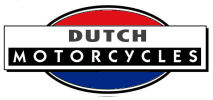




The Simplex on the road. The position of the starting handle will be noted.

The Simplex three-wheeled cycle car, a Dutch production with body design of note.
THE three-wheel runabout type . of machine has fascinated designers of most countries, but so far the only successful designs have been produced in England. America has been responsible for several novel designs, but at the present time there are none being sold in any quantities. France introduced three-wheelers long ago, as did Germany, , but the majority had only a meteoric existence, as have most of the English designs. Of pre-war types, the Morgan seems to be the sole survivor, and to its success may be attributed' the present-day popularity of the three- wheeler among designers. Few of these, however, are yet on the market, and they may be regarded as 1920 propositions. Among these is the new Simplex runabout produced by the Simplex Cycle and Motor Co., of Amsterdam - a more or less well known Dutch firm of motor cycle manufacturers.
As will be seen from the accompanying illustrations, .the Simplex three-wheeler has a body which compares favourably with any three-wheeler produced in this country. Probably an English designer would have included a hood and screen, since one of the advantages of the three-wheeler over the sidecar is the possibility of affording protection from the elements for the driver. However, this omission may be rectified in production models.
Specification.
The specification of this machine includes a channel frame underslung at the front, the engine being carried in front of the axle and driving a three-speed and reverse gear box by means of a chain. The final drive, too, is by chain.
A water-cooled V twin engine of 10 h.p. provides the power, the radiator being placed at the rear of the engine and bonnet.
The rear wheel is suspended by quarter-elliptic spriiigs, and may be detached without disturbing the transmission.
Quickly detachable and interchangeable wheels shod with 700 x 85 mm. tyres are fitted, while a spare wheel is carried on the right-hand side running board, a large tool box occupying a similar position on the other side.
The petrol tank is at the rear of the seats, and is constructed as part of the body panelling.
If you have a query or information about these classic Dutch motorcycles, please contact us